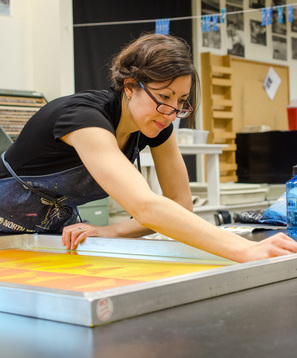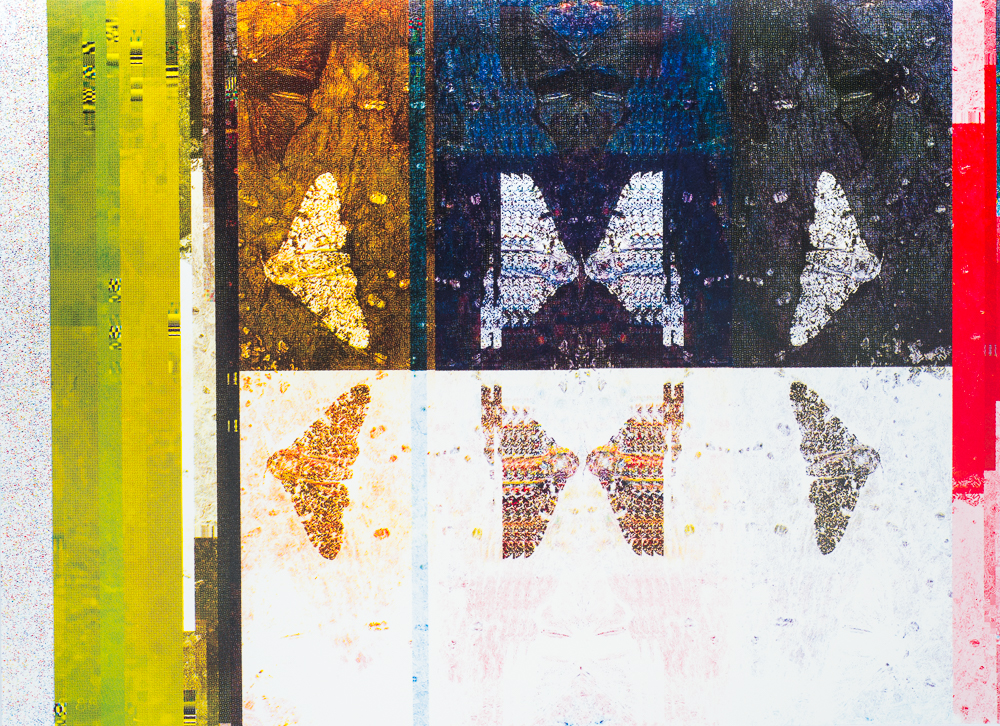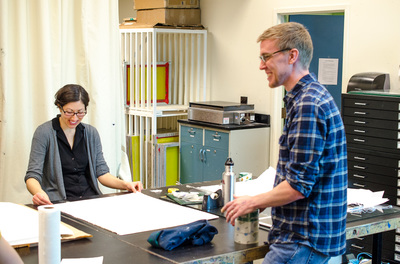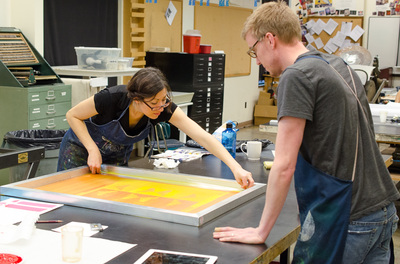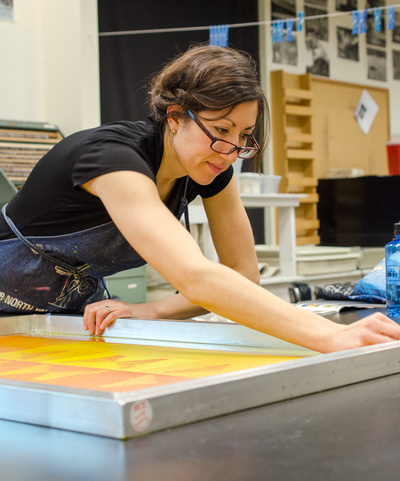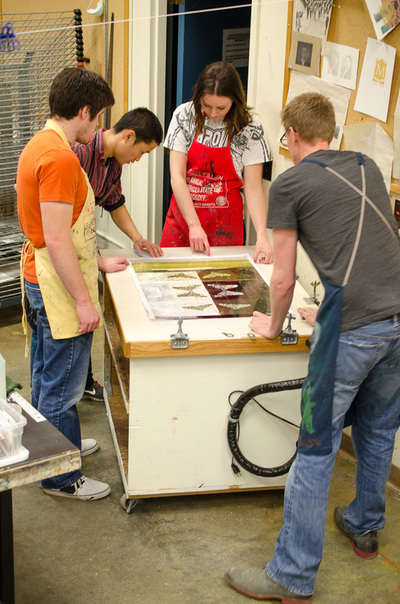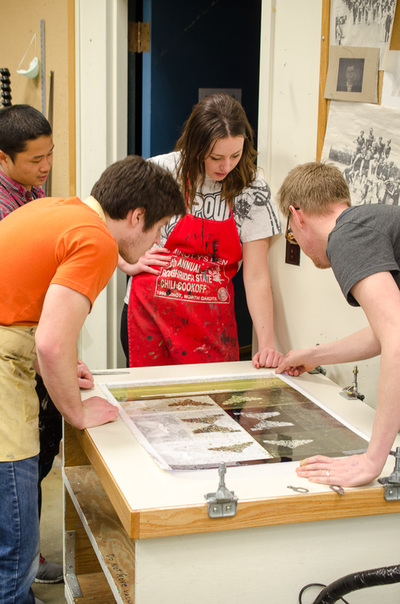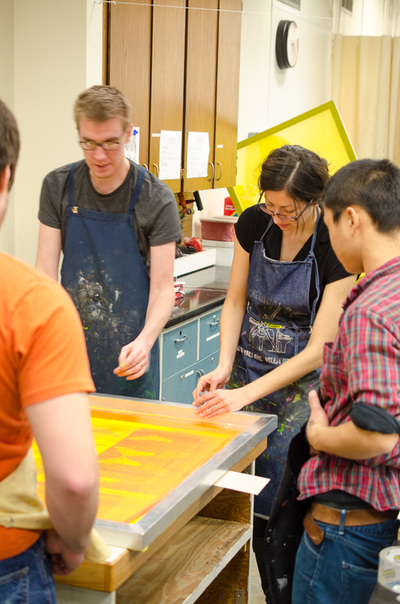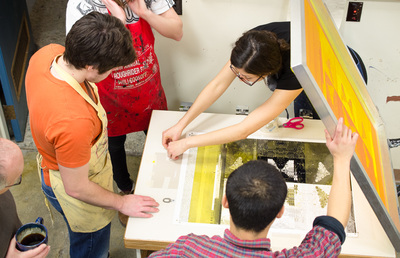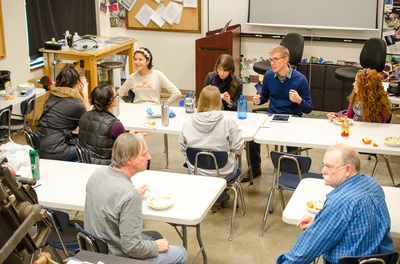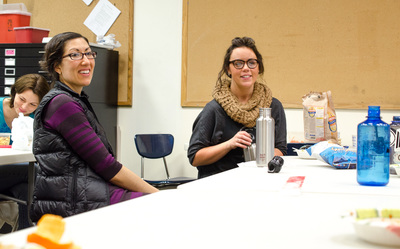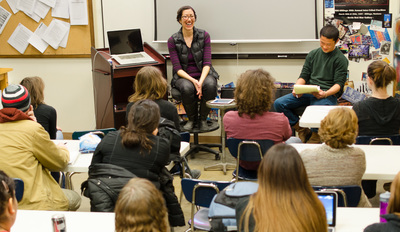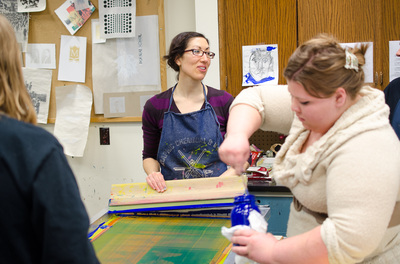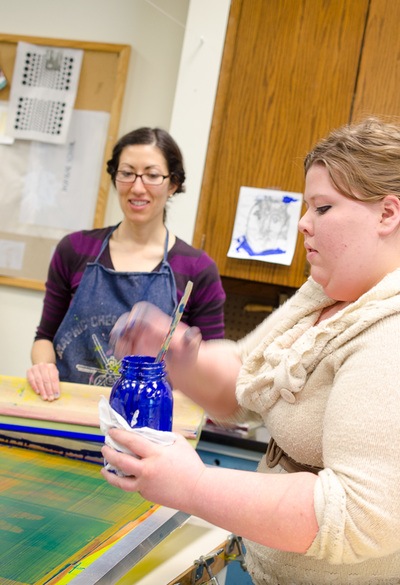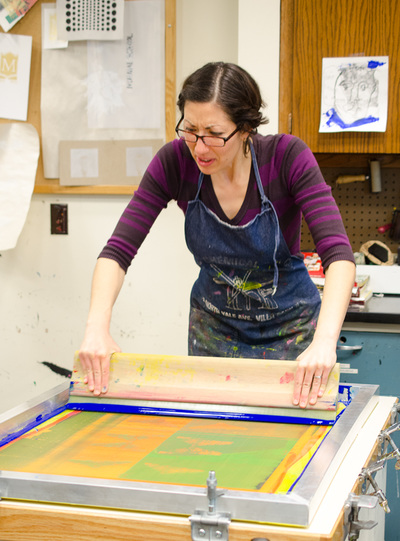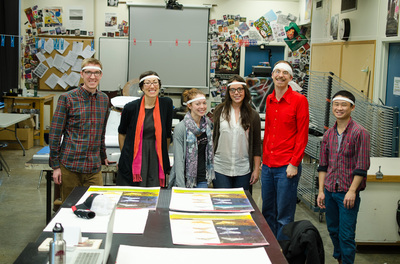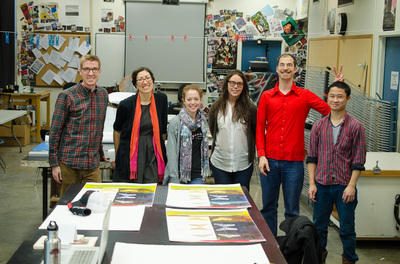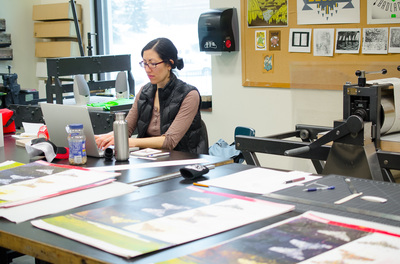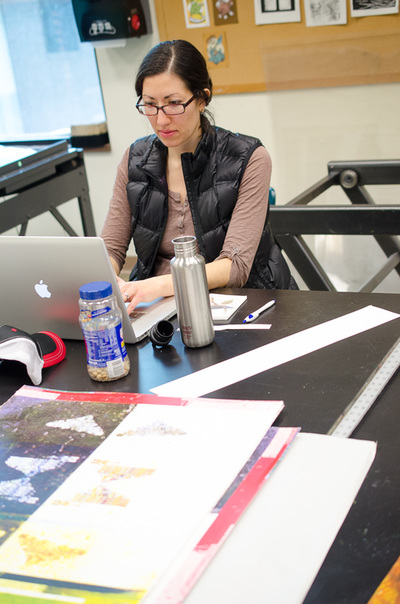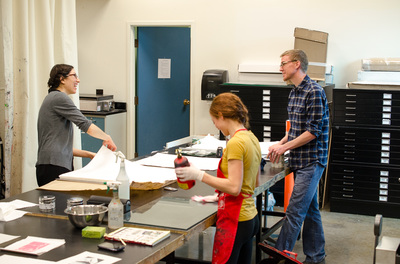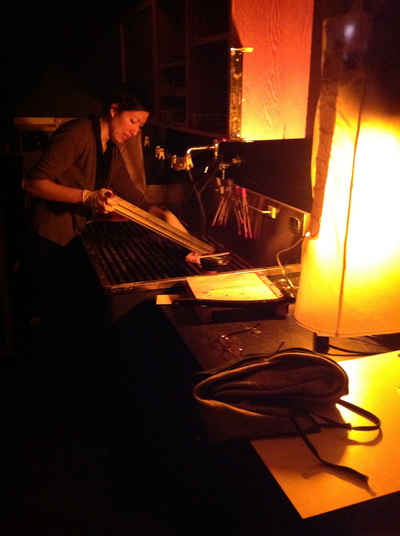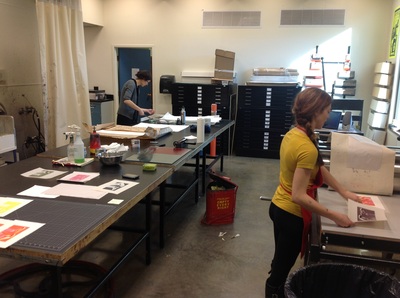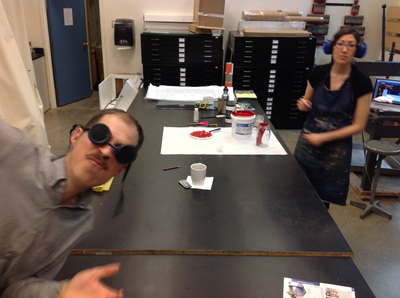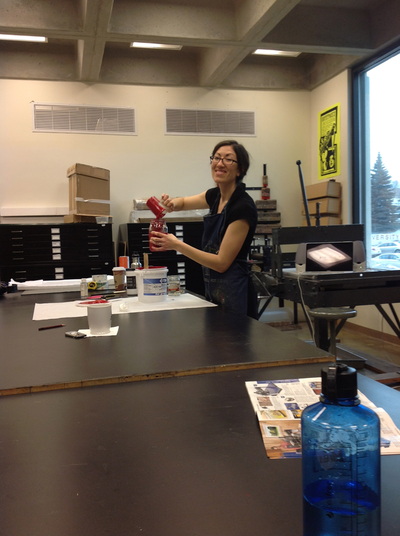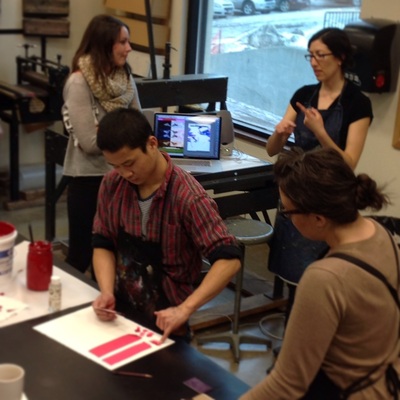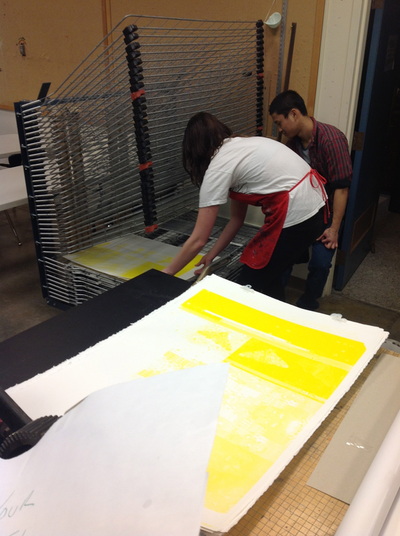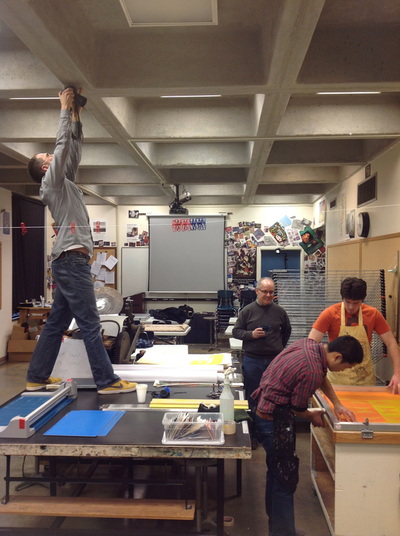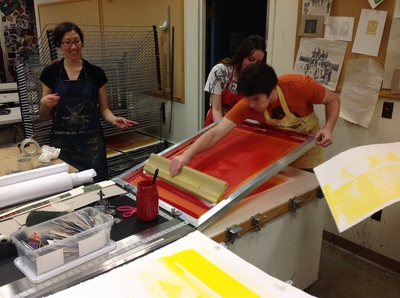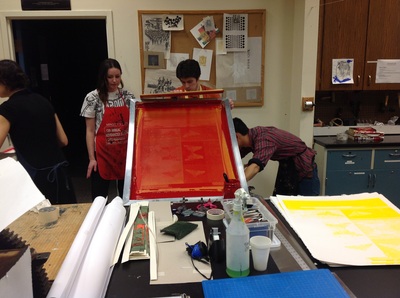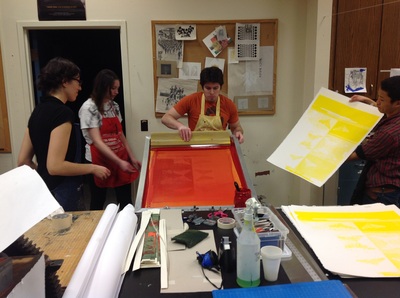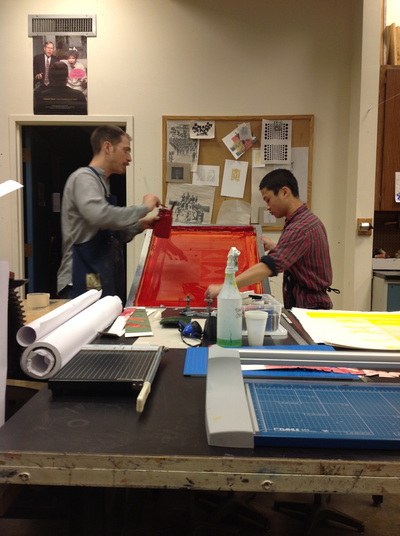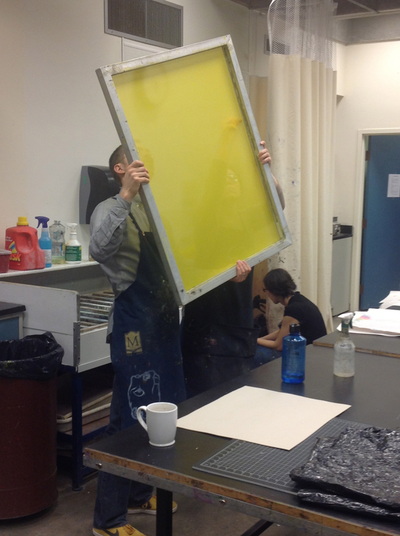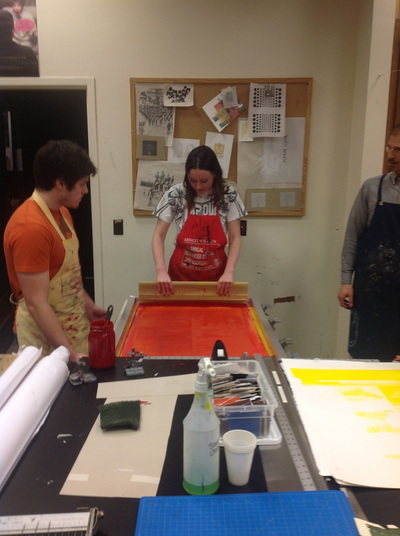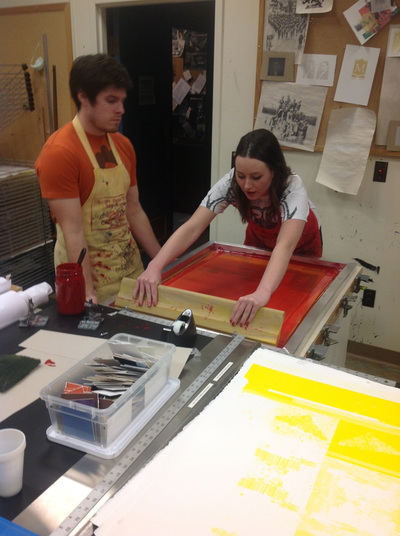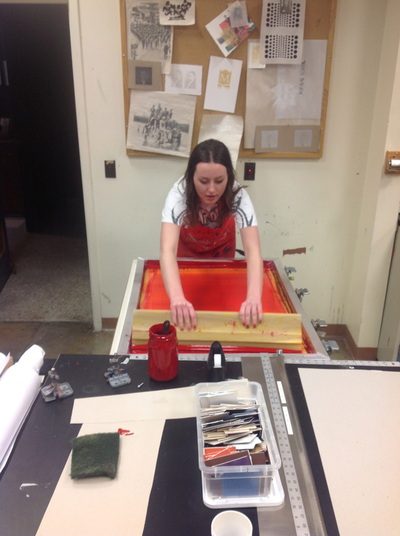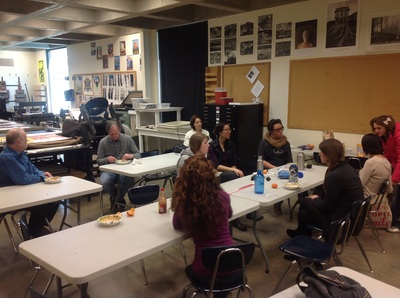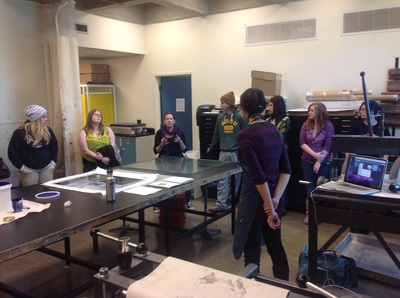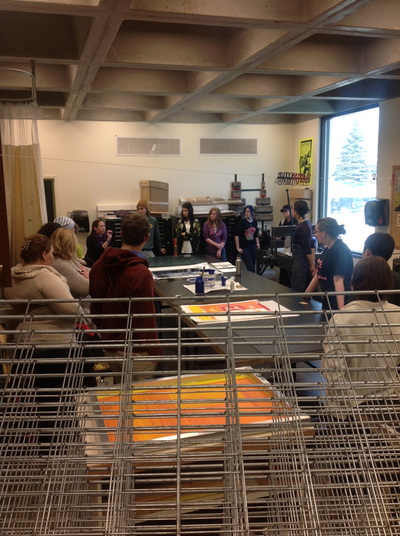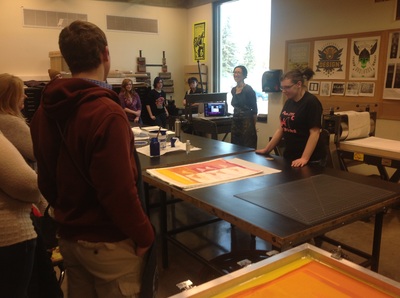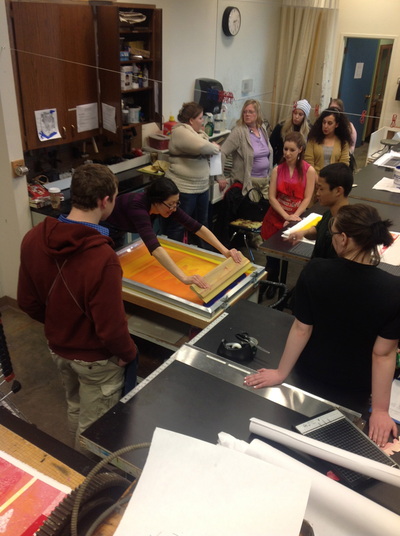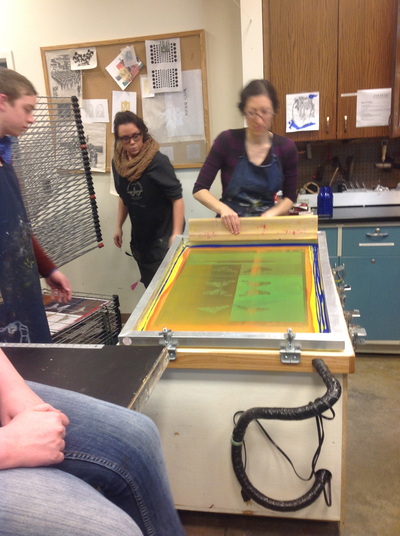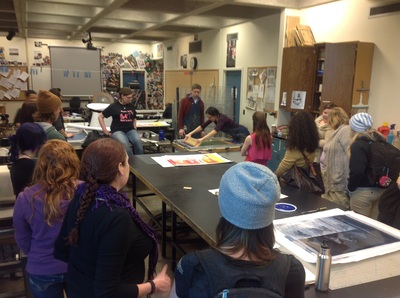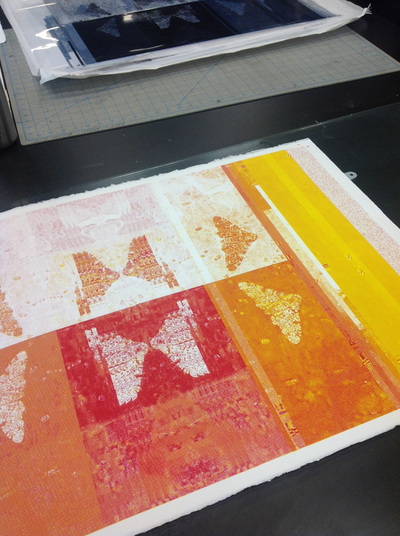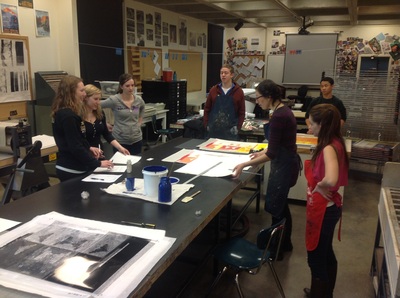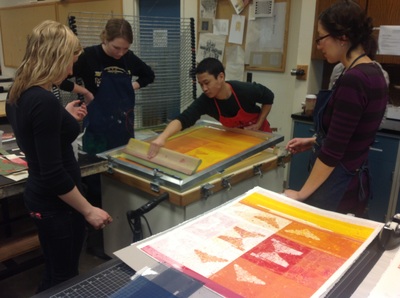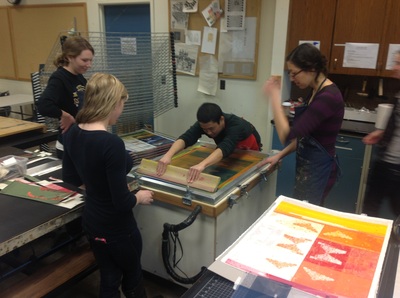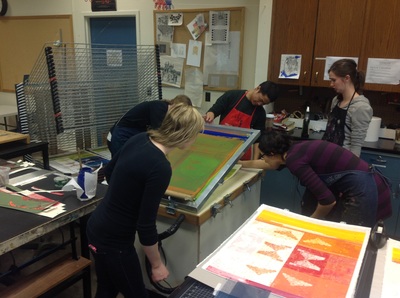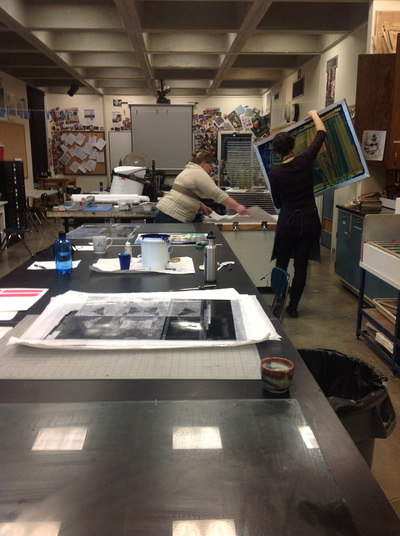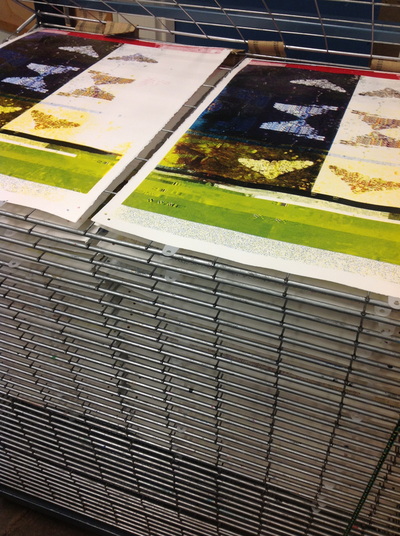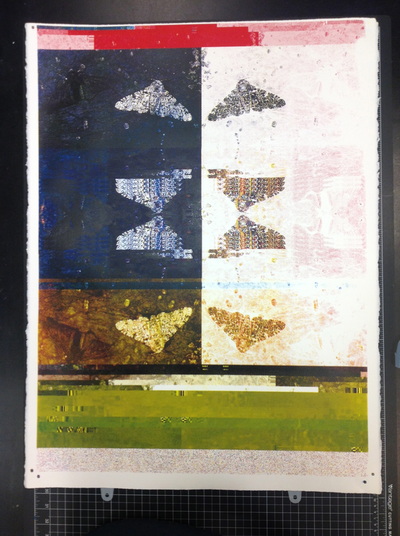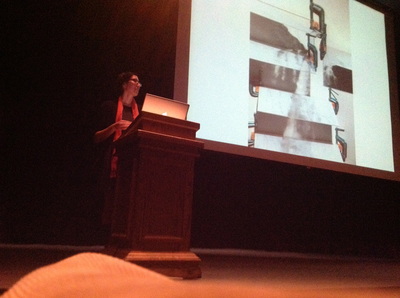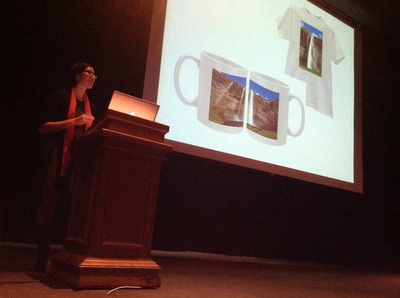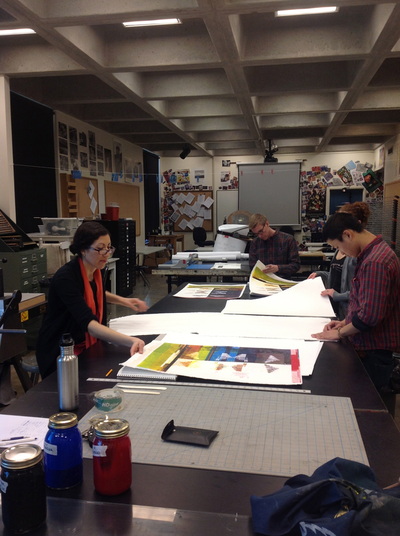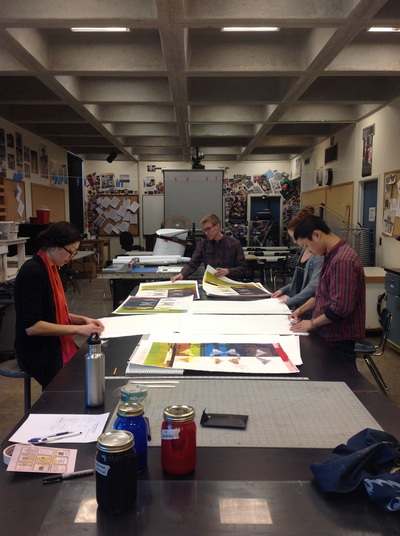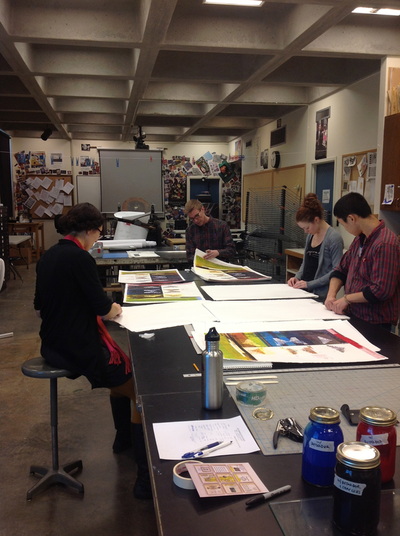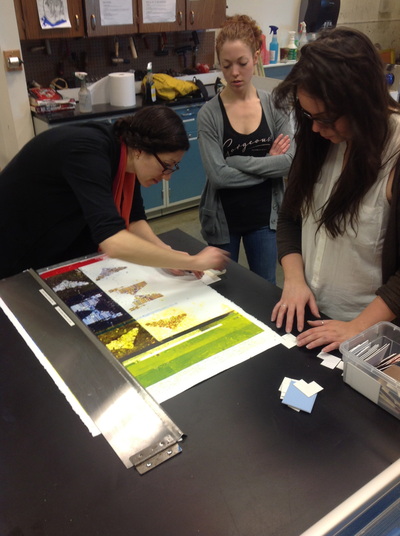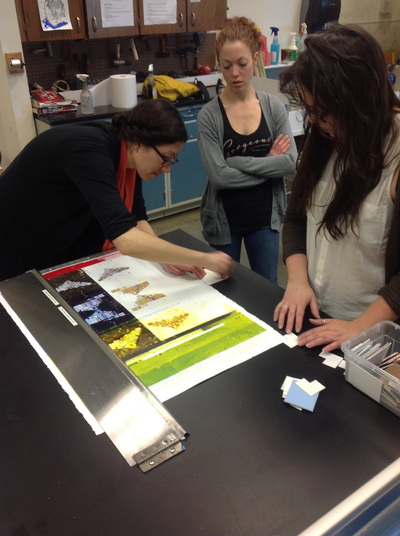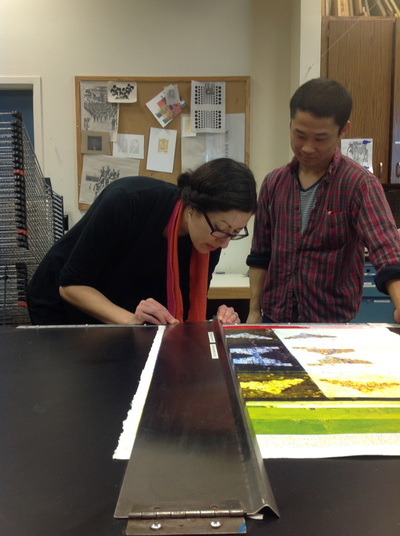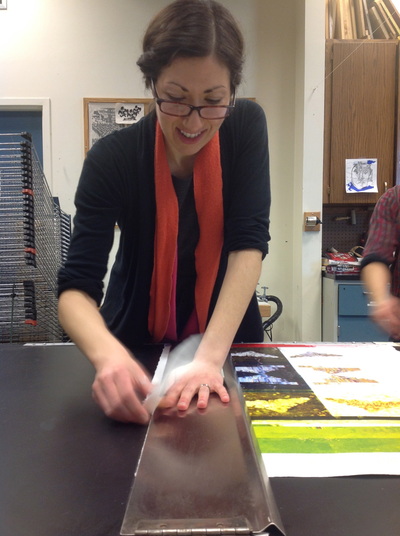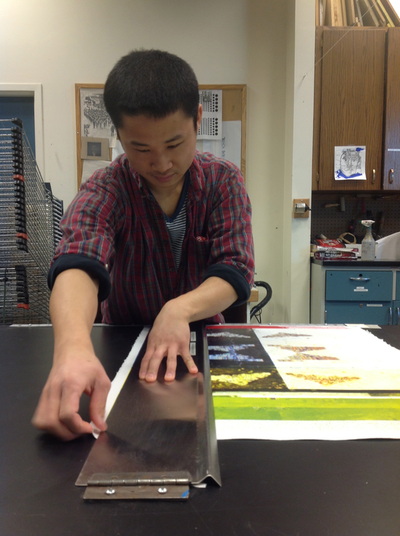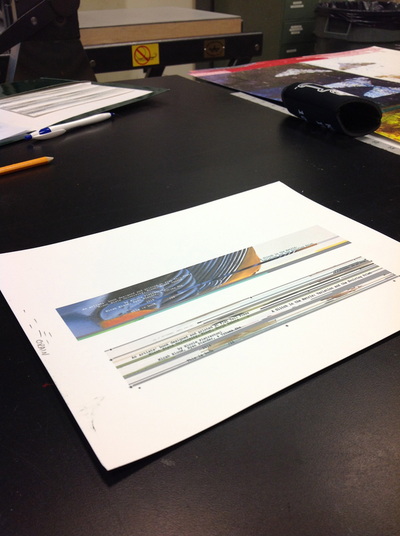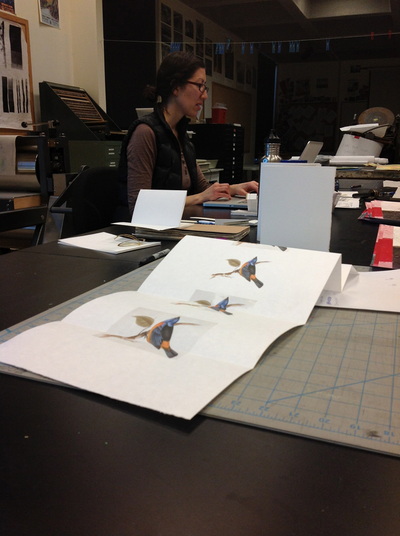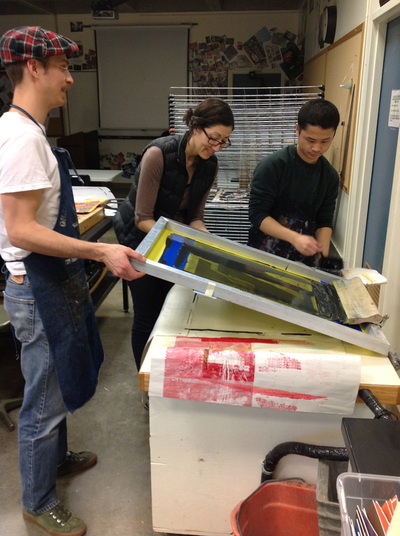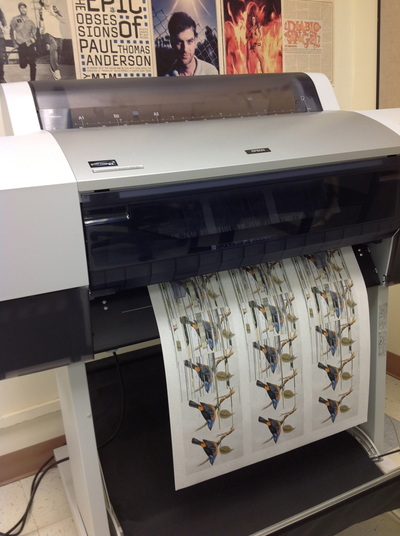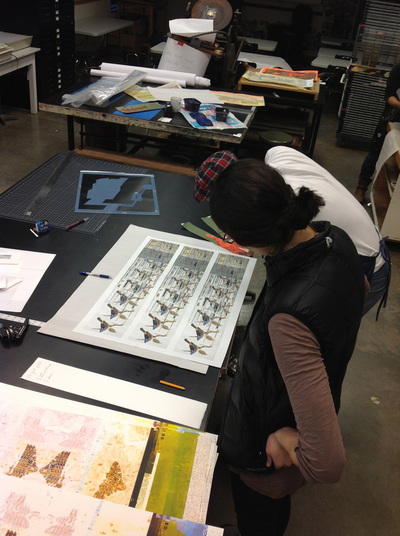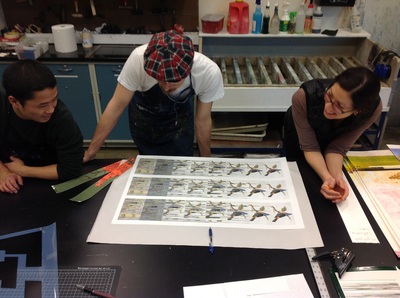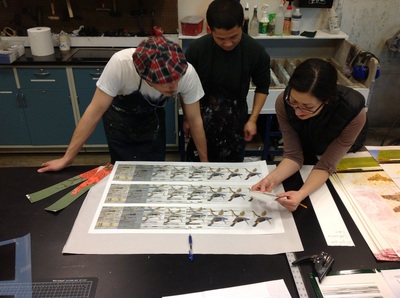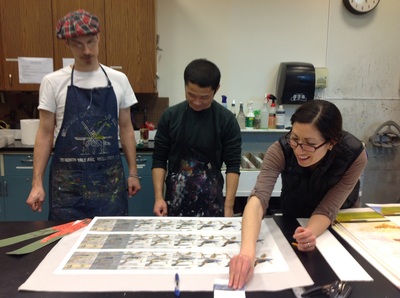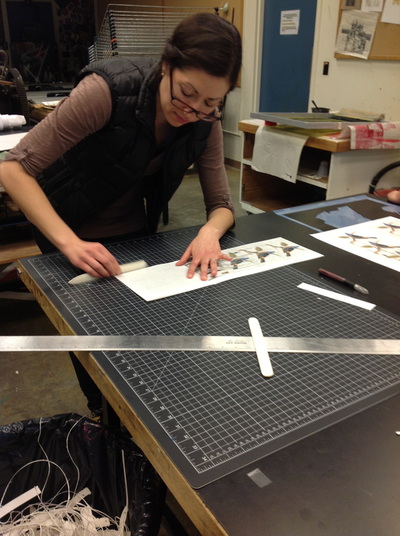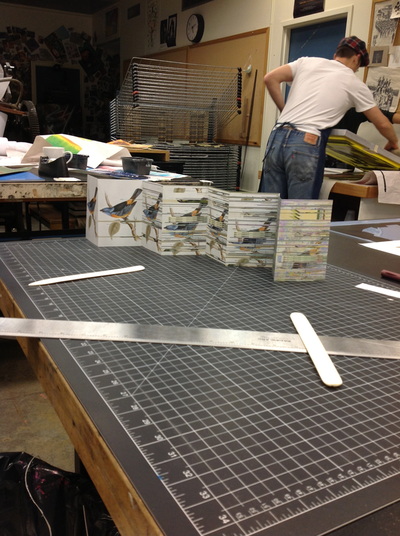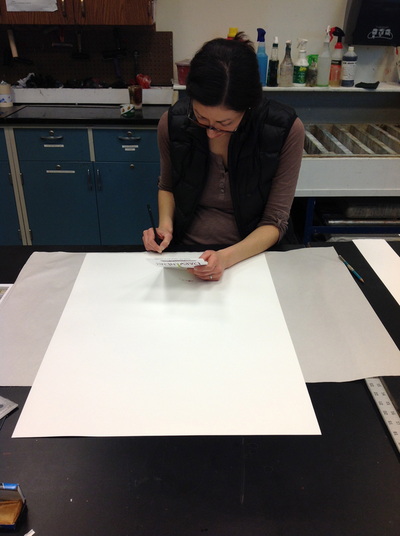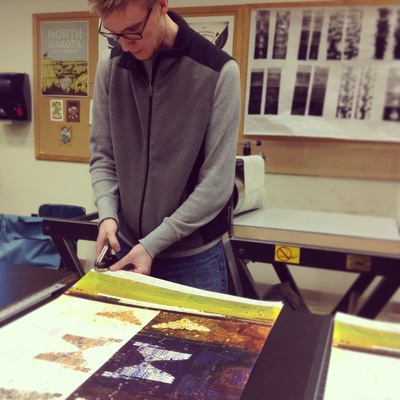Nicole Pietrantoni
Flat Tail Press hosted artist Nicole Pietrantoni in February 2014, and we worked on two print projects. As a shared guest with Minot State University’s Biology department and their annual Darwin Day activities, Pietrantoni developed two print projects dealing with Darwinian adaptation and genetic mutation. Both of her editions were included in the title: A Glitch in the Matrix: Variation and the Evolving Print - the first being a full sheet (22” x 30” ) screen print and the second a digitally printed accordion fold booklet.
Nicole was a great first guest artist and was a natural fit for MSU's Darwin Day. Her "artwork explores the complex relationship between human beings and nature. Employing both traditional and non-traditional methods of printmaking, she creates installations, works on paper, and public art."
A Glitch in the Matrix: Variation and the Evolving Print
Screen Print
Playing off the evolutionary idea of ”unexpected altering of genetic material”, Pietrantoni applied the technique of “digital glitching” in the creation of her images in the screen print. She shared how altering the “DNA” (coded text) of an image can randomly rearrange its original attributes and deliver a new, reorganized visual. This process was employed when Nicole selected the Peppered Moth as subject, and put the image through a barrage of digital (coded text) alterations. Pietrantoni explained that the Peppered Moth was chosen because of Charles Darwin’s studies on its adaption to its mid-nineteenth century changing surroundings. (During the industrial revolution, many British cities were covered in black soot from coal burning factories. Prior to the industrial age, the majority of Peppered Moths were speckled black and white, but the population significantly decreased, as pollution increased. Interestingly, the prevalence of a black Peppered Moth [a result of melanism] increased due to improved camouflage from predation in the polluted landscape.)
Accordion Book
Continuing the idea of digital glitching, Pietrantoni pursued another edition that would take the form of a book, digitally printed on Japanese Masa paper and folded into eight panels. The book proceeds in a chronological sequence starting with an illustration of a bird, and as the pages progress, each image becomes increasingly altered. The glitching was achieved by passing the image back and forth between student and faculty, corrupting code at each stage. The book’s final page displays an extremely altered image that offers little resemblance of the initial illustration.
Find more of her work on her website: www.nicole-pietrantoni.com
Nicole was a great first guest artist and was a natural fit for MSU's Darwin Day. Her "artwork explores the complex relationship between human beings and nature. Employing both traditional and non-traditional methods of printmaking, she creates installations, works on paper, and public art."
A Glitch in the Matrix: Variation and the Evolving Print
Screen Print
Playing off the evolutionary idea of ”unexpected altering of genetic material”, Pietrantoni applied the technique of “digital glitching” in the creation of her images in the screen print. She shared how altering the “DNA” (coded text) of an image can randomly rearrange its original attributes and deliver a new, reorganized visual. This process was employed when Nicole selected the Peppered Moth as subject, and put the image through a barrage of digital (coded text) alterations. Pietrantoni explained that the Peppered Moth was chosen because of Charles Darwin’s studies on its adaption to its mid-nineteenth century changing surroundings. (During the industrial revolution, many British cities were covered in black soot from coal burning factories. Prior to the industrial age, the majority of Peppered Moths were speckled black and white, but the population significantly decreased, as pollution increased. Interestingly, the prevalence of a black Peppered Moth [a result of melanism] increased due to improved camouflage from predation in the polluted landscape.)
Accordion Book
Continuing the idea of digital glitching, Pietrantoni pursued another edition that would take the form of a book, digitally printed on Japanese Masa paper and folded into eight panels. The book proceeds in a chronological sequence starting with an illustration of a bird, and as the pages progress, each image becomes increasingly altered. The glitching was achieved by passing the image back and forth between student and faculty, corrupting code at each stage. The book’s final page displays an extremely altered image that offers little resemblance of the initial illustration.
Find more of her work on her website: www.nicole-pietrantoni.com

